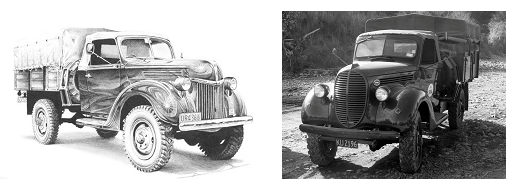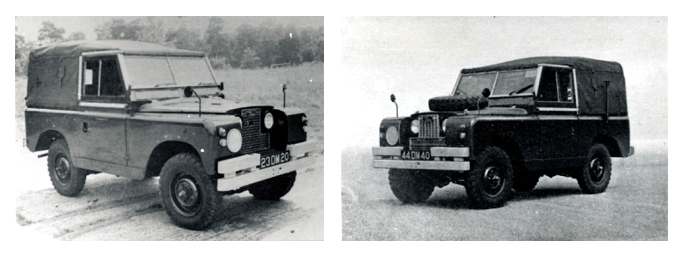General
Prior to the Andean War the Ejército del Perú was poorly equipped with motor vehicles – the country’s poor road network made wide-scale employment of motor transport problematic and the cost of acquiring a large fleet of specialist vehicles was seen as a considerable deterrent.
In 1935 orders were placed for 100 Chevrolet FC-type motor cars to serve as training vehicles in the Ejército’s recently established motor transport school, together with 20 Chevrolet “Suburban” carryall large cars equipped with radio signal equipment. These were followed by additional small quantities of American-produced Chevrolet, Dodge, and Ford motor cars – some of which were converted as light ambulances.
The exigencies of the Andean War, together with the subsequent border conflict with Colombia, delayed further large-scale expansion of the Ejército’s vehicle inventory, while immediate needs were answered by impressment of a motley collection of civilian vehicles.
In 1938 a group of local businessmen in the port of Callao founded a factory for the assembly of imported motor vehicles, in association with the Ford Motor Company of Detroit. This venture would, in 1940, become the kernel of the Empresa Nacional de Autocamiones. It received successive orders for the supply of motor vehicles for the Peruvian military, constructing local coach and body-work to meet military requirements.
In 1941 the Ejército was able to arrange the purchase, in Germany, of a quantity of surplus reconnaissance cars of the Stoewer Type 40 – Einheits-Personenkraftwagen. 67 vehicles were delivered in 1942 and a further 115 in 1943.
Details
Ford/Marmon Herrington Vehicles
Assembled by the Empresa Nacional de Autocamiones at Callao using imported chassis and components with local body work, the Ford/Marmon Herrington is employed by the Ejército as light trucks, staff cars, light artillery tractors, ambulances, and a wide variety of other roles.
Engine: Ford Vee-8 cylinder 3621cc rated at 85hp
Transmission: Four-speed gearbox and transfer box with lockable differential
Brakes: Hydraulic
Suspension: Leaf springs (transversal at front)
Tires: 7.50-17
Wheelbase: 3.10 meters
Length: 4.20 meters
Width: 1.87 meters
Height: 2.06 meters
Weight: 1,900 kg (approximate)
 Stoewer Type 40
Stoewer Type 40
Engine: Stoewer AW2 straight 4-cylinder 1997cc rated at 50hp
Transmission: Five-speed gearbox and transfer box with central differential
Brakes: Mechanical
Suspension: Independent, with coil springs, front and rear
Tires: 6.0 - 18
Wheelbase: 2.4 meters
Length: 3.90 meters
Width: 1.69 meters
Height: 1.90 meters
Weight: 1,775 kg








